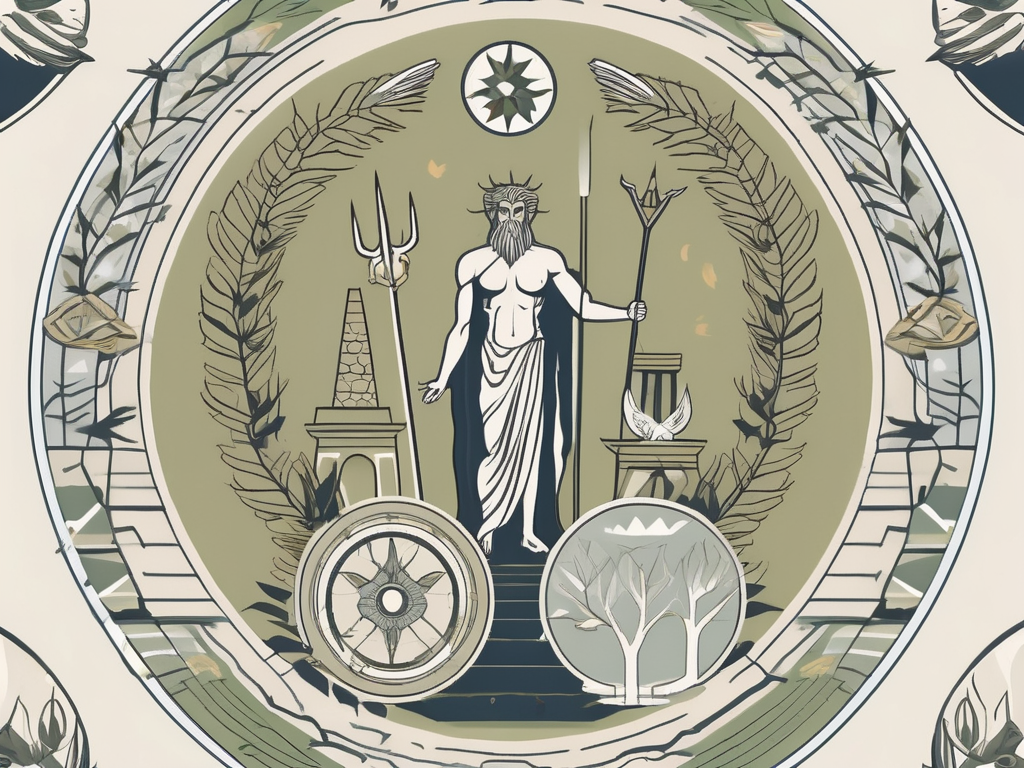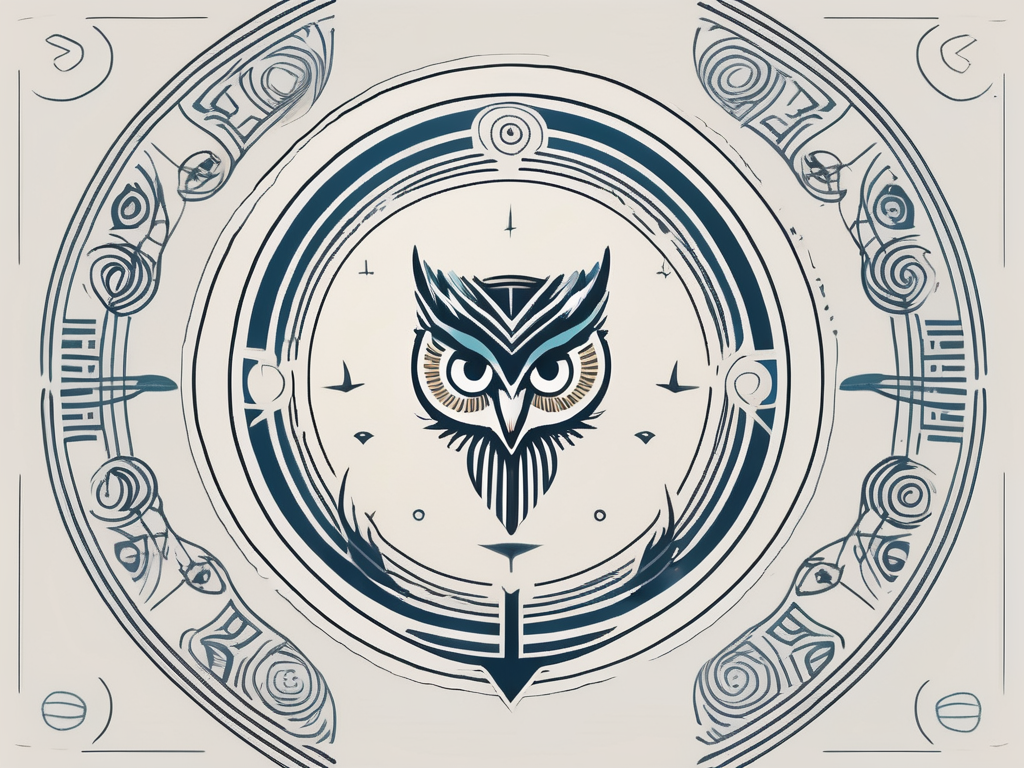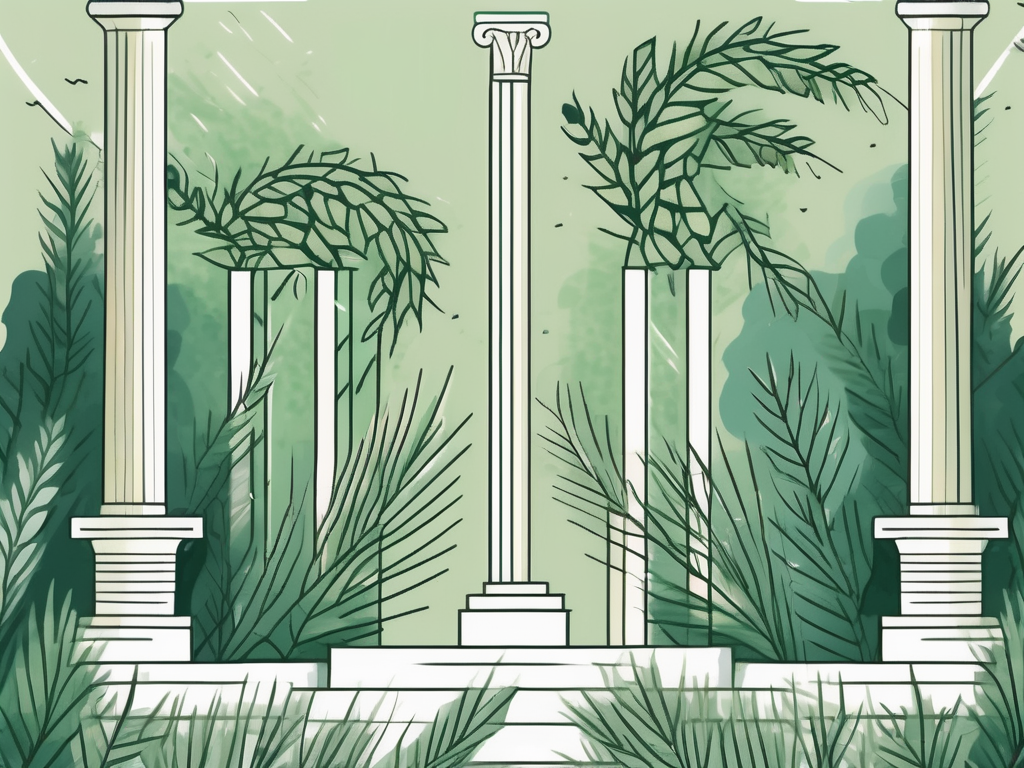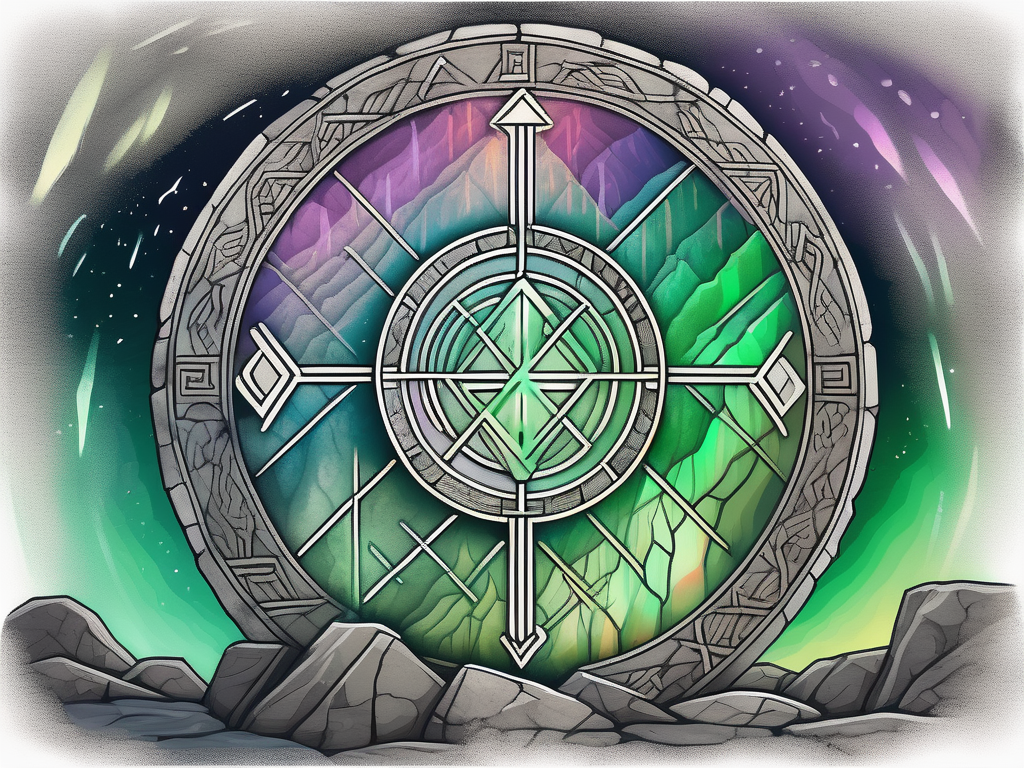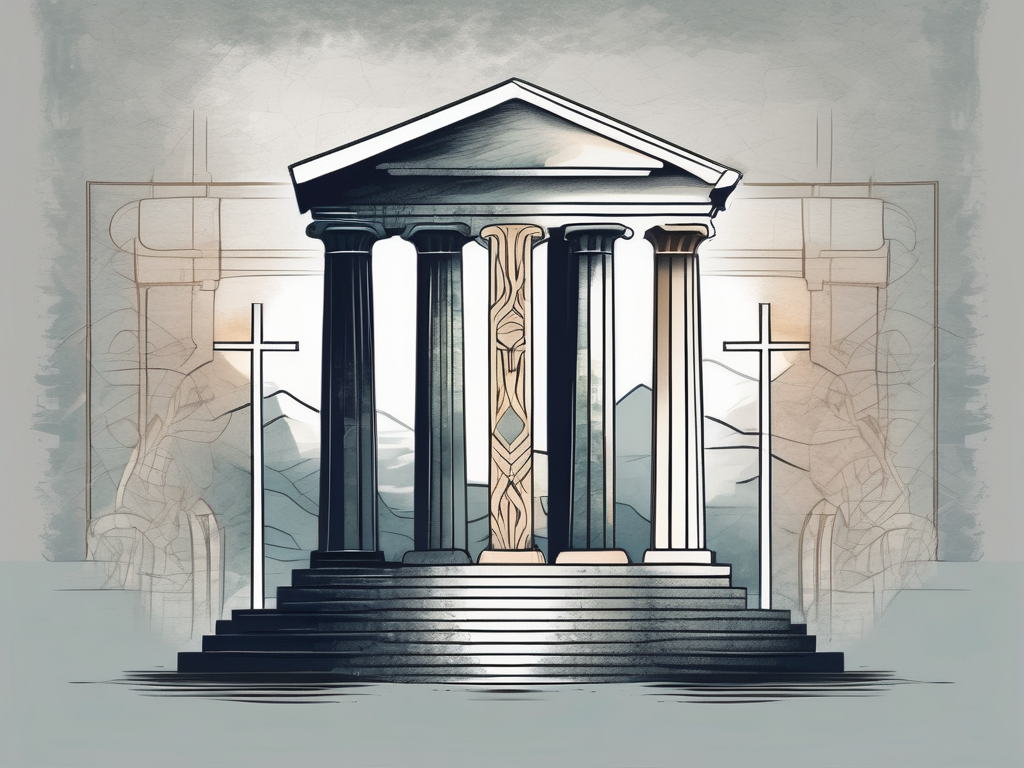Greek mythology is filled with fascinating tales of gods and goddesses, each possessing unique symbols that represent their powers and characteristics. In this article, we will delve into the intriguing world of symbolism in Greek mythology and uncover the secrets behind the sacred symbols of the Greek gods.
Understanding the Role of Symbolism in Greek Mythology
Greek mythology is not merely a collection of stories; it is a complex system of beliefs and values that influenced ancient Greek culture. Symbolism played a vital role in this mythology, as it allowed the Greeks to visually represent abstract concepts and convey the attributes of their gods and goddesses. These symbols served as a language in themselves, aiding in the understanding and worship of the deities.
The Importance of Symbols in Ancient Greek Culture
Symbols held great significance in ancient Greek culture, serving as a means of communication and identification. They represented the divine power and authority of the gods, as well as the values and ideals that the Greeks aspired to embody. These symbols became ingrained in everyday life, appearing in art, architecture, and even on coins and pottery.
Ancient Greek society was deeply religious, and symbols played a crucial role in religious rituals and ceremonies. The Greeks believed that symbols had the power to connect the mortal realm with the divine realm, acting as a bridge between humans and the gods. These symbols were not only visual representations but also carried a spiritual essence that evoked a sense of awe and reverence.
One of the most prominent symbols in ancient Greek culture was the olive branch. The olive tree was considered sacred to the goddess Athena, the patron of wisdom and warfare. The olive branch symbolized peace, prosperity, and victory, making it a powerful emblem in Greek society. It was often depicted in artwork and used as a decorative motif in architecture, serving as a constant reminder of the values and virtues that the Greeks held dear.
How Symbols Conveyed the Powers of Greek Gods
The symbols associated with Greek gods were carefully chosen to represent their unique powers and attributes. For example, Zeus, the king of the gods, was often depicted with a thunderbolt in his hand, symbolizing his control over lightning and storms. The eagle, another symbol of Zeus, represented his keen vision and authority.
Aphrodite, the goddess of love and beauty, was often depicted with a mirror, symbolizing her association with vanity and self-reflection. The rose, with its delicate petals and intoxicating fragrance, was also closely associated with Aphrodite, representing love, desire, and passion.
The trident was a symbol commonly associated with Poseidon, the god of the sea. This three-pronged weapon represented his dominion over the oceans and his ability to cause earthquakes. It was a potent symbol of power and authority, reflecting the immense strength and force that Poseidon possessed.
These symbols not only conveyed the powers and attributes of the gods but also served as a visual language that allowed the ancient Greeks to understand and connect with their deities. Through these symbols, the Greeks could express their devotion and seek guidance and protection from the gods.
In conclusion, symbolism played a crucial role in Greek mythology and ancient Greek culture. It allowed the Greeks to visually represent abstract concepts, convey the attributes of their gods and goddesses, and connect with the divine realm. These symbols became ingrained in everyday life, serving as a constant reminder of the values and virtues that the Greeks held dear. The power and significance of these symbols continue to resonate in modern times, as they provide us with a glimpse into the rich and complex world of ancient Greek mythology.
Decoding the Symbols of Major Greek Gods
Let’s take a closer look at some of the most renowned symbols associated with the major Greek gods, such as Zeus, Athena, and Apollo.
Greek mythology is filled with fascinating gods and goddesses, each with their own unique symbols that represent their powers and characteristics. These symbols provide insight into the rich and complex world of ancient Greek religion and culture.
Zeus: The Thunderbolt and the Eagle
Zeus, the ruler of Mount Olympus, wielded the thunderbolt as a symbol of his immense power. This lightning bolt could strike with deadly accuracy, making Zeus a formidable force to be reckoned with. The thunderbolt also represented Zeus’ control over the forces of nature, showcasing his ability to command the elements.
In addition to the thunderbolt, the eagle was another significant symbol associated with Zeus. The eagle represented Zeus’ ability to soar above all others, symbolizing his supremacy and wisdom. Known for its keen eyesight and majestic presence, the eagle embodied the qualities that Zeus possessed as the king of the gods.
Athena: The Owl and the Olive Tree
Athena, the goddess of wisdom and war strategy, was often associated with the wise owl. With its piercing gaze and nocturnal nature, the owl symbolized Athena’s wisdom and vigilance. It was believed that Athena’s owl could see through darkness and reveal hidden truths, making it a fitting symbol for the goddess of wisdom.
Another symbol closely linked to Athena was the olive tree. The olive tree represented peace and prosperity, as well as her role as the patron goddess of the city of Athens. The olive branch, a symbol of peace, was often depicted in Athena’s hand, emphasizing her role in promoting harmony and civilization.
Apollo: The Lyre and the Laurel Wreath
Apollo, the god of music, prophecy, and healing, was known for his mastery of the lyre. This musical instrument represented Apollo’s creativity and artistic talents. The lyre was often associated with Apollo’s role as the leader of the Muses, inspiring poets, musicians, and artists to create their best work.
Additionally, the laurel wreath, made from the leaves of the laurel tree, was a symbol of victory and achievement, often bestowed upon those who excelled in music and poetry. Apollo, as the god of music and poetry, was often depicted wearing a laurel wreath as a mark of his accomplishments and divine status.
Exploring the symbols of major Greek gods allows us to delve deeper into the mythology and understand the significance of these deities in ancient Greek society. These symbols not only represent the powers and attributes of the gods but also serve as a reminder of the enduring legacy of Greek mythology in art, literature, and culture.
The Lesser-Known Symbols of Greek Gods
While the symbols of major Greek gods are widely recognized, there are lesser-known symbols associated with other deities that are equally intriguing.
Exploring the fascinating world of Greek mythology reveals a plethora of symbols that represent the various gods and goddesses. While some symbols are well-known and easily recognizable, others have remained hidden in the shadows, waiting to be discovered and appreciated. Let us delve into the realm of lesser-known symbols associated with Greek gods and unravel their hidden meanings.
Hermes: The Caduceus and the Winged Sandals
Hermes, the messenger of the gods, was often depicted with a caduceus, a staff entwined with two snakes. This symbolized Hermes’ ability to traverse between realms safely and mediate between the gods and mortals. The caduceus, with its serpentine embrace, represented the balance between opposing forces, signifying Hermes’ role as a mediator and bringer of harmony.
In addition to the caduceus, Hermes was also known for his winged sandals, which adorned his feet. These sandals, crafted by the divine blacksmith Hephaestus, represented Hermes’ swift and agile nature. With every step he took, the wings on his sandals fluttered, allowing him to move with unparalleled speed and grace. They were a symbol of his ability to deliver messages swiftly and efficiently, ensuring that communication between the gods and mortals remained seamless.
Dionysus: The Thyrsus and the Vine
Dionysus, the god of wine and revelry, was often depicted with a thyrsus, a staff adorned with ivy vines and topped with a pinecone. This seemingly simple symbol held profound significance, representing joy, ecstatic celebration, and the divine influence of Dionysus. The thyrsus, with its vibrant ivy leaves and the pinecone symbolizing fertility, embodied the essence of Dionysian festivities.
The vine, often entwined with the thyrsus, further emphasized the association between Dionysus and wine. The vine, with its twisting tendrils and bountiful clusters of grapes, symbolized the abundance and fertility associated with wine. It represented the transformative power of Dionysus, as the humble grapevine was magically transformed into a source of joy and merriment.
As we explore the lesser-known symbols of Greek gods, we uncover a rich tapestry of meaning and symbolism. These symbols offer us a glimpse into the intricate world of Greek mythology, where every deity is adorned with unique emblems that reflect their powers, attributes, and influence. By unraveling these hidden symbols, we gain a deeper understanding of the gods and the stories that have captivated humanity for centuries.
The Shared Symbols Among Greek Gods
Interestingly, some symbols were shared among multiple Greek gods, representing universal concepts and traits.
The Scepter: A Universal Symbol of Power
The scepter, a staff symbolizing authority and power, was commonly associated with various Greek gods, including Zeus, Hera, and Poseidon. These deities used the scepter to assert their dominance and rule over their respective realms.
The Cornucopia: A Shared Symbol of Abundance
The cornucopia, also known as the “horn of plenty,” symbolized abundance and prosperity. Typically associated with Demeter, the goddess of agriculture, the cornucopia was often depicted overflowing with fruits, grains, and other bountiful offerings.
The Influence of Greek God Symbolism on Modern Culture
The symbolism of Greek gods continues to leave a lasting impact on modern culture, with references appearing in various artistic and literary works.
Greek God Symbols in Literature and Art
Throughout history, writers and artists have drawn inspiration from Greek mythology, incorporating its symbolism into their creations. From ancient epic poems to contemporary novels, Greek god symbols can be found woven into the fabric of literature. Similarly, in art, depictions of gods and their symbols remain prominent, paying homage to the rich heritage of Greek mythology.
The Impact of Greek God Symbols on Modern Mythology
The enduring symbols of Greek gods have not only influenced ancient mythology but have also left their mark on modern storytelling and entertainment. Many characters in books, movies, and video games are inspired by Greek gods and feature their symbols, adding depth and meaning to these narratives.
As we unravel the symbolism behind the sacred symbols of Greek gods, it becomes evident that these representations were far more than just decorative motifs. They provided a visual language through which the ancient Greeks could convey the power, attributes, and ideals associated with their deities. Today, the symbols of Greek gods stand as a testament to the enduring legacy of ancient Greek culture and mythology, continuing to captivate and inspire us.
